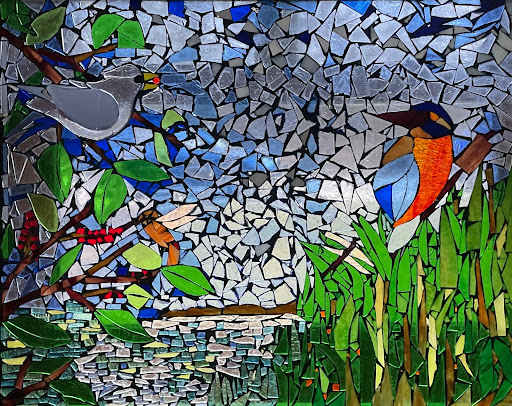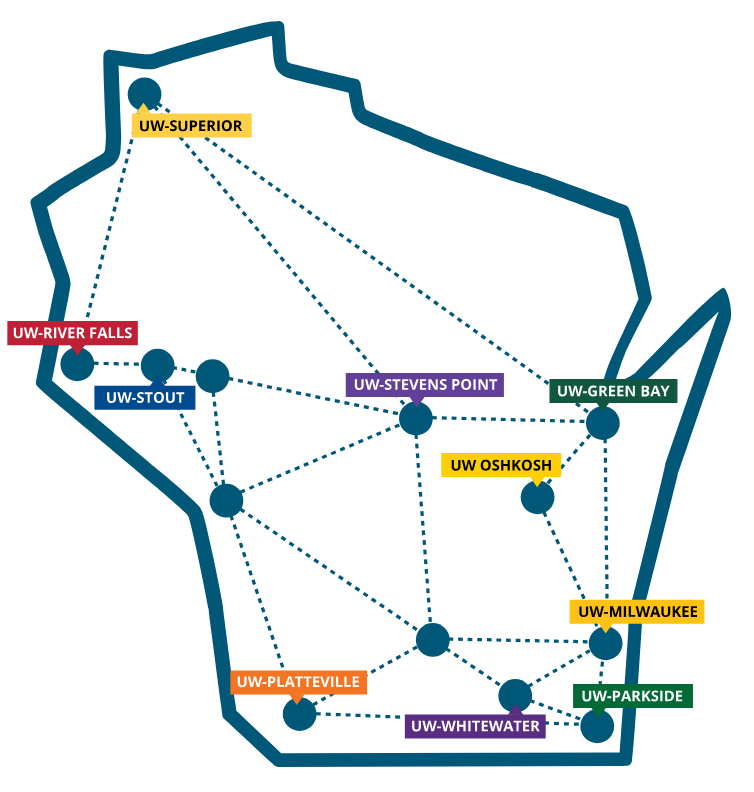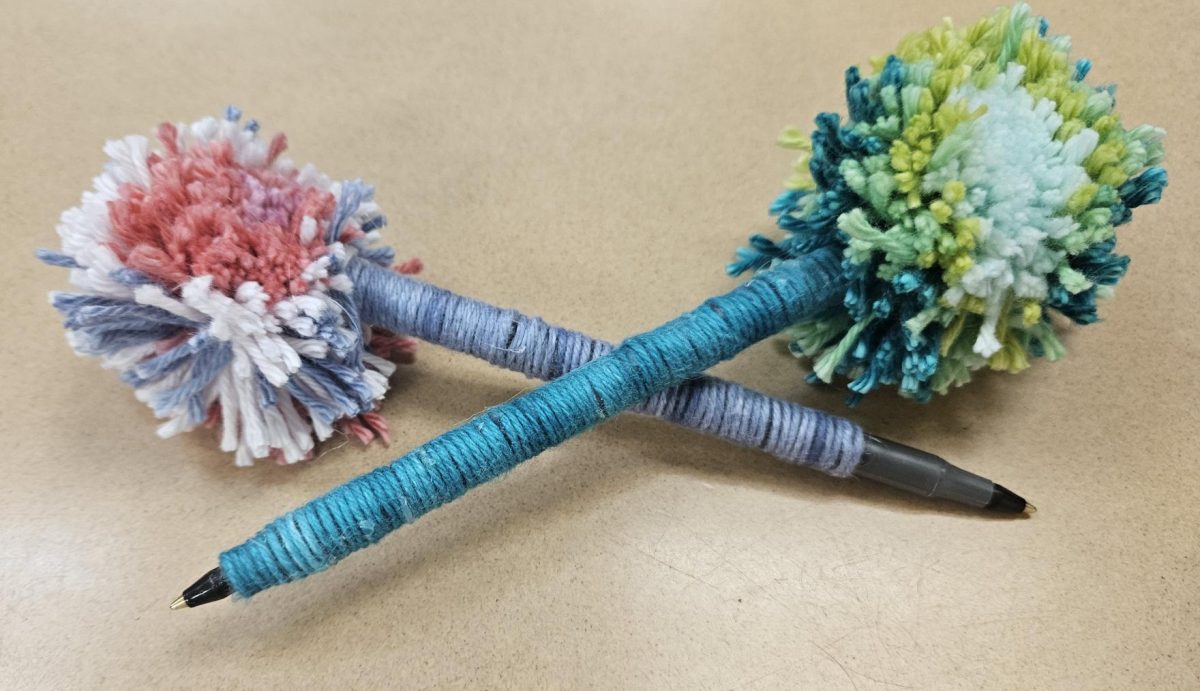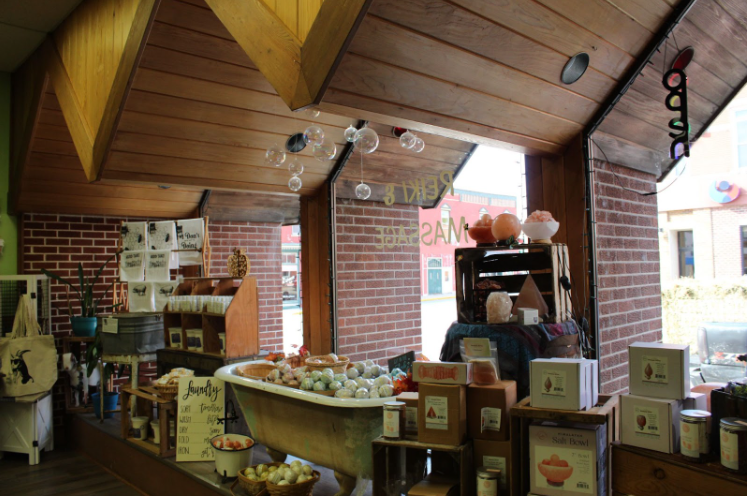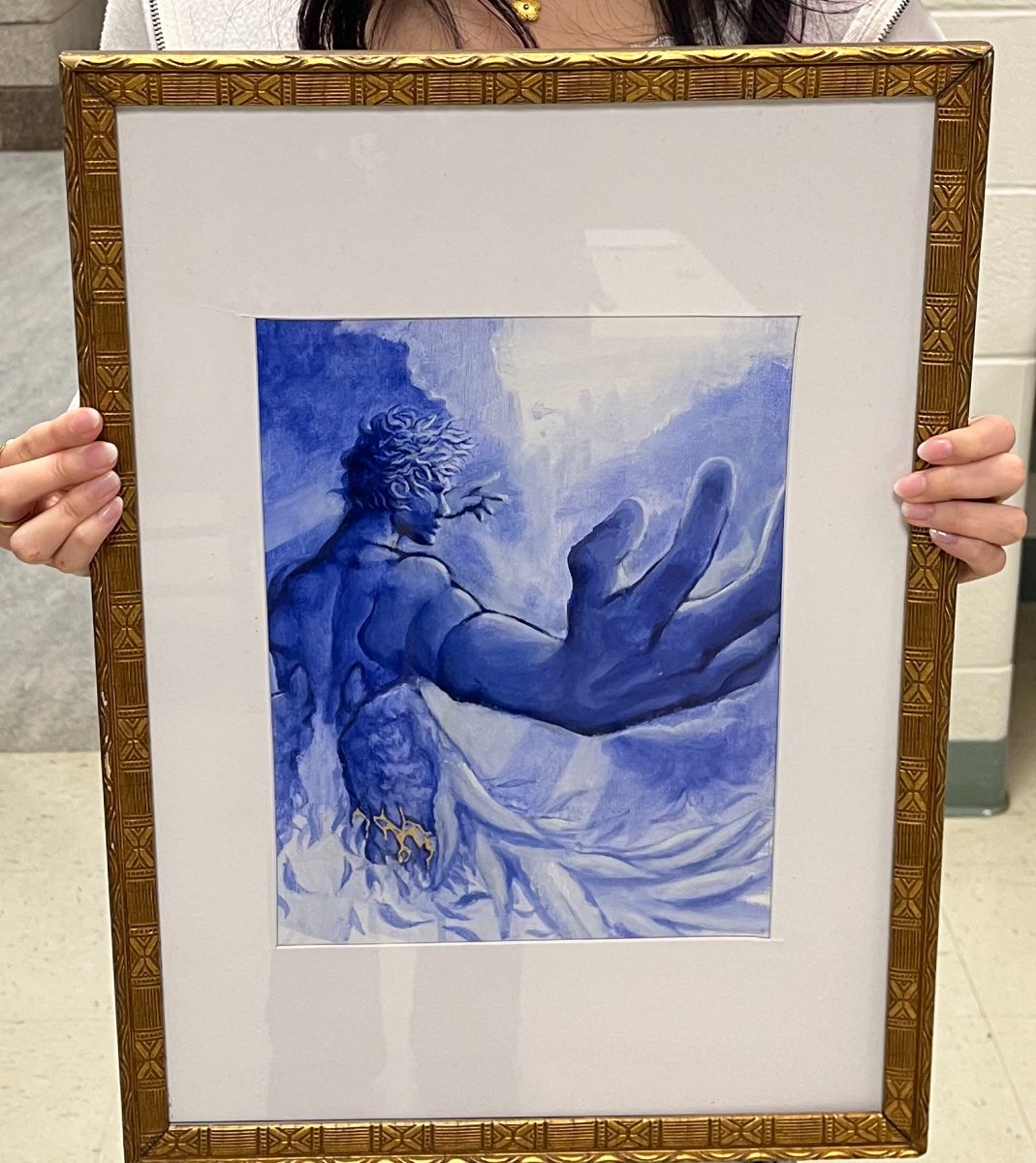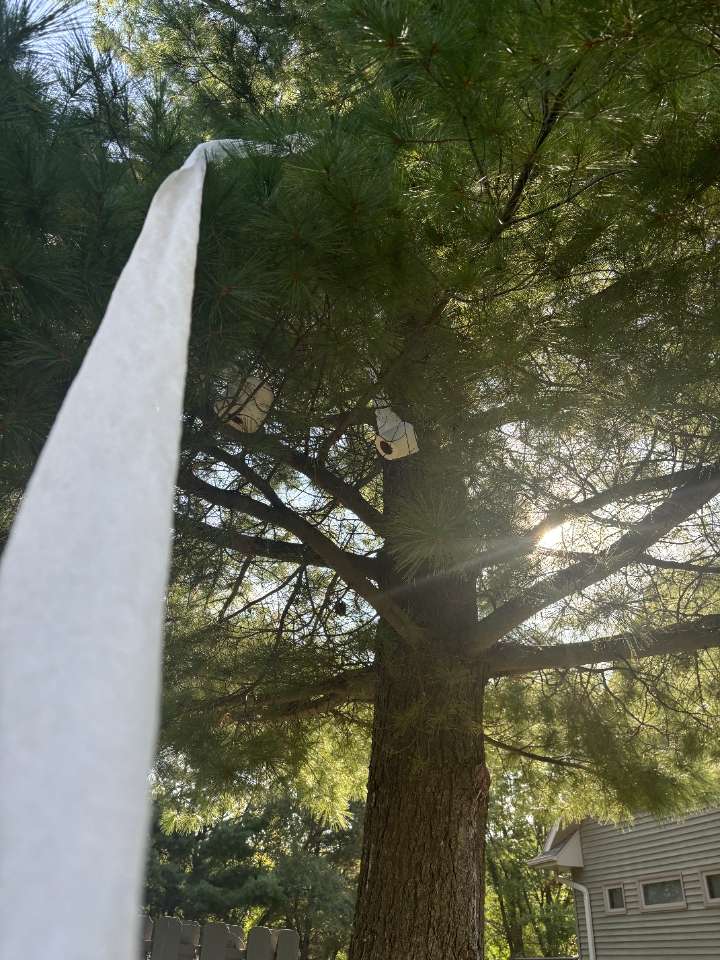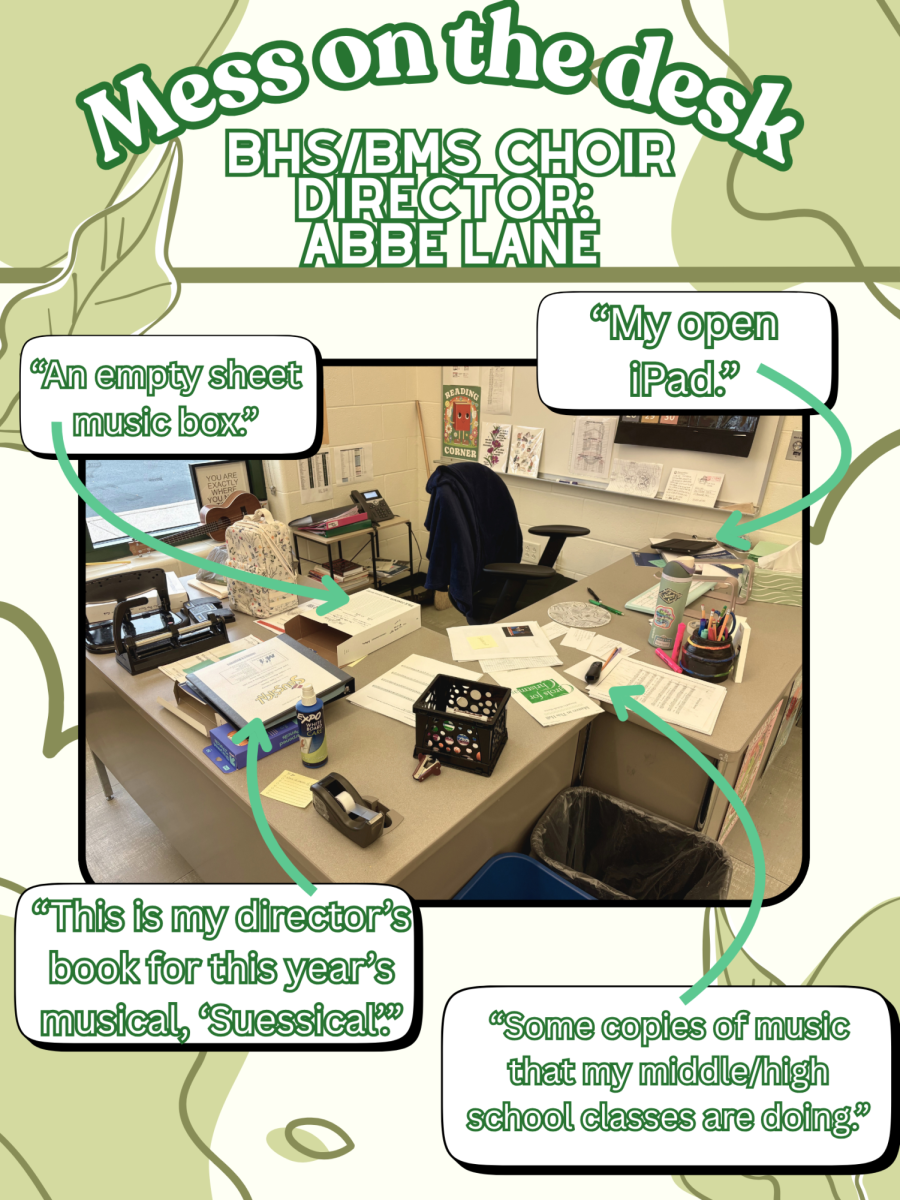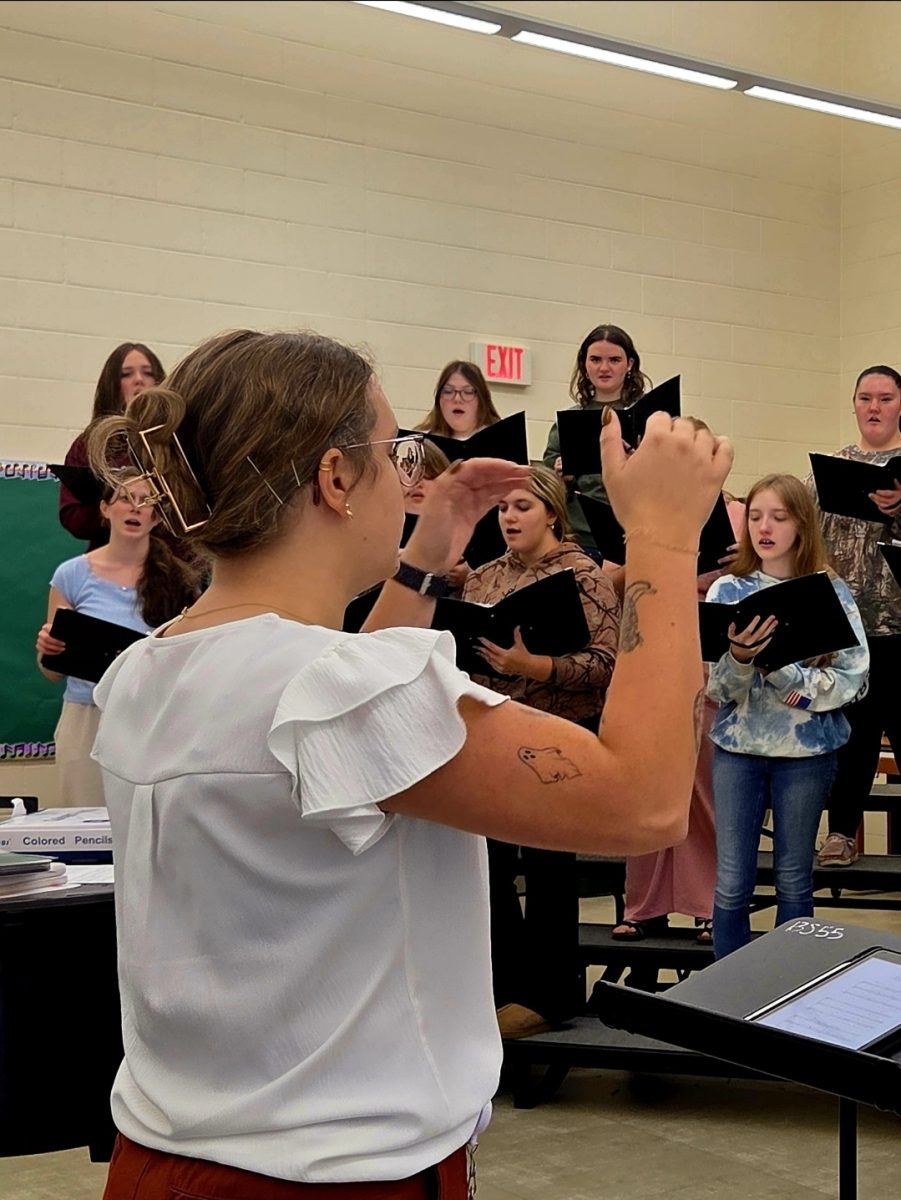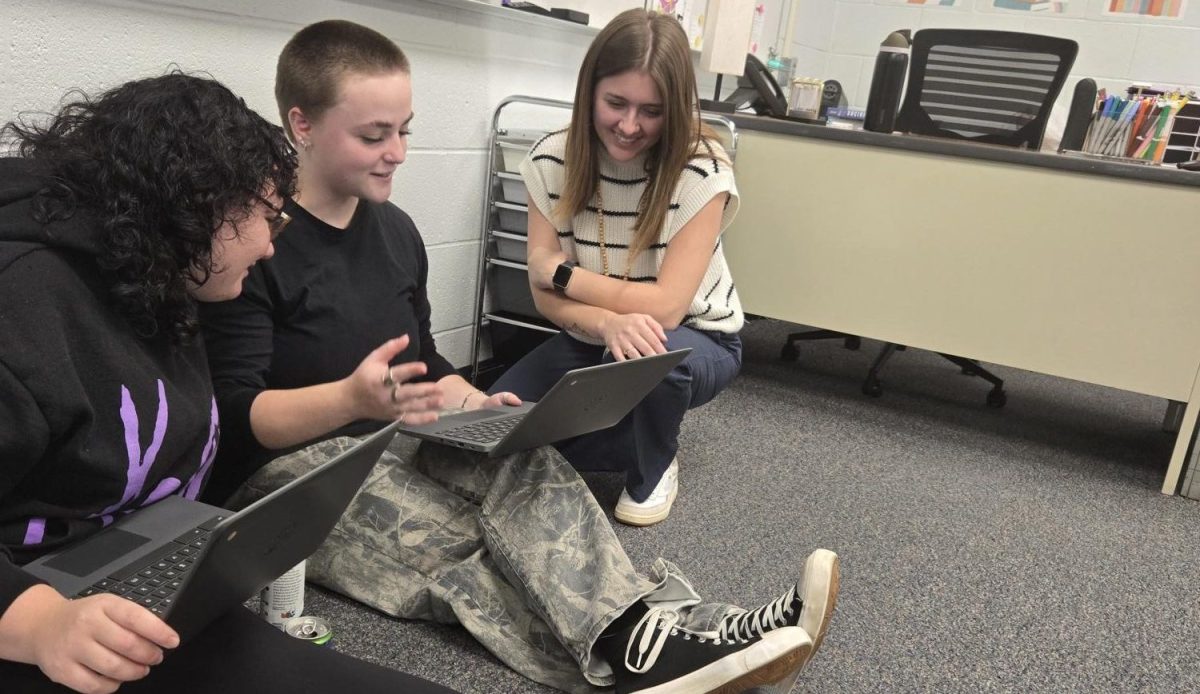Everyone is able to see art in their everyday lives, it’s all around us. Whether it’s a drawing made with crayons, or a professionally made painting in a museum. Fortunately, for students, they’re able to take a look at their one and only art teacher, Lori Rademann and her finely made glass mosaics.
Rademann first found a point of interest in this decorative art form when her uncle, who was a glass blower, moved away to the state of Washington. With him leaving, he also left behind many different pieces of glass. Rademann says the glass material she had from him wasn’t the best since it was mainly made to be melted, or was already melted. She also says that mosaics didn’t become a hobby for herself until she was employed as one of Berlin’s art teachers.
“Since mosaics were a project I had to teach to students to make, I first had to learn how to make them myself. So, ultimately that is when everything really started,” Rademann said.
When it comes to shopping for Rademann’s mosaic glass she is very resourceful. When there are curbside bulk pickups, she starts driving around town in search of old windows people would leave out, not only for her own crafts, but also for students in her Glass and Fibers classes.
“I personally wouldn’t buy stuff for my work at an art supplier store, just because it’ll end up being much more expensive than it really needs to be,” Radamann said.
She also says that Goodwill and St. Vincent de Paul Society are secondhand places to search for glass at. She reveals that the glass she uses isn’t always window glass.
“I always try to get away with thrifting and scrounging for broken up colored wine bottles and dishes,” Radamann said.
For Rademann, her inspiration for these crafts comes from the world all around her, such as trees, flowers, birds, and other artist’s ideas on Pinterest. Some of her personal inspirations she’s gotten are from her saltwater aquarium, koi pond, pets, and garden. She says that her mosaics don’t have much meaning behind them, that they’re all randomly inspired by items or animals that catch her attention. She always starts with transparent glass as it is much easier to work with.
“I love using transparent glass because then you can draw your inspiration out, and set it right behind the glass. So then it’s kind of like coloring and I just put the colors I want in the lines of my drawing,” Rademann said. After that, all there is left for her to do is grout it.
Rademann uses the grout that is sold at Menards because it is more affordable to buy there. She also says her personal preferable shade of grout is dark gray. Although the grouting is the last step, Rademann describes it as the most challenging part of it all. This is because it is very messy. It also must be done quickly since it’s not easy to work with.
“Once the grout is poured I can’t just walk away from it, I’ve got to keep wiping it until all the glass is clean, because if you walk away, then it’s like cement on the surface of your glass,” Radamenn said. She also says that the grouting process is very nerve-racking to her because that is when the final product will show.
“Every time I pour the grout I am like ‘Oh, my God, I’ve ruined it.’ But then I have to just keep wiping and wiping and wiping, in order for it to all show,” Rademann said.
Usually the larger mosaics take Rademann up to a year to make, therefore she is only able to turn out a big mosaic once a year, considering she isn’t fully dedicated to make them.
“Making mosaics is just something I do when I’m bored and kind of relaxing, except sometimes it’s not. A lot of the time I end up cutting myself a lot, and at that point I’ll be done for the day,” Rademann said.
Although Rademann isn’t dependent on her mosaics, she has successfully sold various pieces on her Etsy site each for $350. But overall selling pieces is difficult, therefore it’s likely for her to only sell one piece a year. She has also generously given away some of her work. For instance she gifted FCE teacher, Missy Daubner a piece for her bathroom window to play the part of a curtain.
“She noticed I had no curtains in my bathroom so she told me she was going to make a mosaic for my window. It was so beautiful, with many birds, I loved it, it was a very thoughtful gift,” Daubner said.
Out of all the many mosaics Rademann has made hers and her son, sophomore Duncan Eberhardy’s, most beloved piece is an octopus swimming in water. She states that it’s her favorite because it is extremely long, almost five feet in length, and it fits perfectly in her home’s tall window. She says she won’t be selling that piece because it’s her son’s favorite and he wouldn’t allow her to.
While Eberhardy tries to not get too involved with his mom’s projects, he says how his mom’s passion for mosaics is very noticeable, as he has seen her work on them on their dining table many times.
“I think all my mom’s mosaics are pretty cool. We have some hanging up on our windows and it looks really nice,” Eberhardy said.
What had started as a necessity for teaching has grown to be her own personal hobby. Rademann’s mosaics are more than just pieces of art, they are a reflection of her own personal creativity, resourcefulness, and passion.
These mosaics don’t only enhance windows by adding colorful light, but inspire her surroundings to look for artistic potential in their commonplace items.

